En Route to Full Recovery in 2023 pg8
Balancing Act Spotted in the Market pg10
Consideration of ESG in Business Valuation - Part 2 pg11
Helping You Maximise Your Capital Allowances IBC



The tabling of Budget 2023 was more anxiously awaited compared to other years basically because everyone expected parliament to be dissolved immediately after the budget has been tabled. The first hint came when the tabling was brought forward from the originally scheduled date of 28 October to 7 October, presumably so that the elections can be held before the usual flooding season begins in mid-November. In fact, rumours swirling around the dissolution of parliament and GE15 overshadowed the budget and became the main focus rather than the budget itself. True enough, three days after the presentation of the budget proposals by the Finance Minister Tengku Datuk Seri Zafrul Tengku Abdul Aziz on 10 October which incidentally was a public holiday in Malaysia, the Prime Minister Datuk Seri Ismail Sabri Yaakob announced that he has received the consent of the Agong to dissolve parliament. This means that 15th General Elections (GE15) is likely to be held sometime in November despite the warning by the meteorological authorities
that the flooding season which usually starts in November may cause a lot of inconvenience and disrupt the balloting process. The dissolution of parliament also means that the budget proposals will just remain that; as it will not be able to go through a debate and approved by parliament and will have to be retabled by the new Finance Minister, with or without any modifications, after the cabinet has been formed by the new government voted in after GE15. Notwithstanding that the budget will likely only be approved early next year, we have studied the budget proposals and carried out an assessment on how some of these proposals will impact the property sector. The following are the key points noted by us.
Based on the statistics presented by the Finance Minister, Malaysia’s economy is projected to have grown by 5% in Q1 2022 and further improved by 8.9% in Q2. As such, the government has revised the growth forecast for full year 2022 from the previous projection of between 5.3% to 6.3% to now between 6.5% to 7%. Nevertheless, as Covid-19 has not completely been eradicated and in view of the anticipated global economic slowdown resultant partly from the Russia-Ukraine war and the ensuing trade sanctions imposed by Western countries

on Russia as well as inflationary pressures amidst tightening monetary policies, the country’s GDP growth for 2023 is expected to moderate to between 4% and 5%.
With an eye on GE15, the proposals in Budget 2023 are clearly expansionary in their thrust, with total government expenditure projected to jump from RM332 billion to RM372.3 billion, despite government revenue projected to decline from RM285.2 billion to RM272.6 billion in 2023.
Budget 2023 has been described as people-centric which is to be expected given that it is an election year budget but the major concern expressed by some experts is that it is lacking in structural reforms which are much needed to move the country to the next level of growth.
A stronger and stable economy which continues to expand is crucial for the wellbeing of the property sector. Although economic growth in 2023 is expected to moderate to a slower pace, the projected growth of between 4% to 5% is still a commendable growth rate and this will help to support investment and buying interest in the property sector although it is foreseeable that the sector will continue to face a challenging market environment.
In addition to goodies traditionally handed out to the B40 group, this time round, the M40 group which has also been badly hit by the pandemic induced economic slowdown over the past two years, has not been ignored. Tax payers in the income bracket of between RM50,000 to RM100,000 will benefit from a tax reduction of two percent in personal tax for YA2023 and this, according to estimates by tax consultants, will result in tax cash savings of up to RM1,000 for those in this income bracket. However, those in the income bracket of between RM250,000 to RM400,000 will now be placed together with those in the higher income bracket of between RM400,000 to RM600,000 which means that their maximum tax rate will go up slightly from 24.5% to 25%.
On the corporate front, a tax reduction of two percentage points will be accorded to SMEs with annual chargeable income of up to RM100,000. This means that their income will now be taxed at 15% instead of 17%.
Under the Bantuan Keluarga Malaysia (BKM) scheme, households earning less than RM2,500 per month with at least five children will receive BKM assistance of RM2,500 whilst those with up to four children will receive between RM1,000 and RM2,000.
Senior citizens and singles will continue to receive BKM assistance of RM600 and RM350 respectively, subject to them meeting the specified income thresholds.
The government will continue to provide additional assistance of RM500 to single parents with children in that they will be eligible to receive a maximum of RM3,000 in YA2023, up from RM2,500 this year.
All these cash handouts as well as personal and corporate cuts will lead to an increase in spending power of the taxpayers and this in turn, will likely benefit the retail and perhaps the local tourism sectors as well. However, the tax savings is not substantial enough to result in any significant boost to the purchase of homes or other properties.
The budget proposals which directly impacts the real estate sector are summarised below:
Currently, a 100% stamp duty exemption is given on the instrument of transfer of real property between husband and wife by way of love and affection but in the case of transfer between parents and children and vice versa (applicable to Malaysian citizens only) a stamp duty remission of only 50% is given on the instrument of transfer of real property.
In order to streamline the stamp duty treatment, it has been proposed in Budget 2023 that a stamp duty of only RM10 be charged on the instrument of transfer of real property between the following parties by way of love and affection on the condition that the recipient of the property is a Malaysian citizen for such instruments executed from 1 January 2023:
a) between husband and wife; b) between parents and children; and c) between grandparents and grandchildren.
Currently, full stamp duty exemption is given on the instrument of transfer and loan agreement for the purchase of the first residential home priced up to RM500,000 by Malaysian citizens for sale and purchase agreements executed from 1 January 2019 to 31 December 2025.
For residential homes priced between RM500,000 and up to RM1 million, a stamp duty exemption of 50% is currently given. It has now been proposed that the stamp duty exemption be increased to 75% for this category of residential homes and applicable for first time home buyers and for sale and purchase agreements executed until 31 December 2023.
Currently, a 100% stamp duty exemption is given on the instrument of loan/ financing agreement relating to the structuring or rescheduling of a loan/ financing agreement between a borrower and the financial institution executed from 1 January 2022 to 31 December 2022. It has been proposed in Budget 2023 that this exemption be extended for another two years for loans or financing agreements executed from 1 January 2023 to 31 December 2024.
Budget 2023 has proposed to increase the funding allocation for building of new homes and home renovations in rural areas from RM361 million to RM460 million.
In Sabah and Sarawak, the financial assistance for construction of new homes has been increased from RM68,000 to RM79,000 per unit. This is expected to result in the building of 3,000 new homes with Sabah and Sarawak being the main beneficiaries.
An allocation of RM367 million will be channeled to the People’s Housing Programme in urban areas including new developments in Marang, Terengganu and Arau in Perlis and this is expected to benefit 12,400 people.
The Employees Provident Fund (EPF) will continue the development of its flagship township, Kwasa Damansara in Sungai Buloh with a total investment of RM3 billion until 2025 and this is expected to create more than 6,000 jobs.
The Budget includes a proposal to provide RM3 billion in guarantees under the Housing Credit Guarantee Scheme.
The government has proposed to increase the budget allocation for development expenditure in YA2023 to
RM95 billion from RM75.6 billion in 2022 and RM64 billion in 2021. Amongst some of the projects that will benefit from this increased allocation are major transport infrastructure projects such as the PanBorneo Highway, the Gemas-Johor Bahru Twin Highway, the East Coast Rail Link Project (ECRL), the Johor BahruSingapore Rapid Transit system (RTS), the Central Spine Expressway as well as the MRT 2 and 3 projects.
Budget 2023 did not contain many proposals which have a direct impact on the property sector. The raising of the stamp duty exemption from 50% to 75% for residential properties priced between RM 500,000 and RM1 million will be welcomed by house buyers of such properties and this is expected to provide a boost to buying interest in homes in this sub-segment of the residential sector.
However, as only first-time homebuyers are eligible for this stamp duty reduction, there may not be a big boost to property sales as not many first-time home buyers would have achieved the financial capability to buy a property of more than RM500,000. It would provide a more effective boost to the market if this incentive is open up to all buyers and not just those buying a home for the first time. Some quarters in the property industry felt that this incentive should also be made available to those buying properties in the secondary market instead of just being limited to property purchases from property developers in the primary market.
The reduction of the stamp duty to only RM10 for transfers between parents and children and between husbands and wives for love and affection will provide good reasons for Malaysians to take advantage of this incentive and carry out the transfers before the government reverts to the previous tax structure. Nevertheless, some quarters are suggesting that since the theme of the budget is Malaysian Family, Prospering Together, this reduction in stamp duty should also be extended to include transfers between siblings.
The increase in funding for building of new affordable homes under the various
government programmes is a positive step and this will help the targeted groups to own homes or to improve their current accommodation. The allocation of RM3 billion for the housing credit scheme is a positive step as it will help those in the lower income groups and those without fixed incomes like workers in the gig economy to buy and own their homes as they will then, with the guarantee provided under the scheme, be able to qualify for and take up loans to finance their house purchases. The infrastructural spending will augur well for the areas which stand to benefit from the improved accessibility which the highways and rail links will bring about. This will spur new developments in the vicinity and may also lead to an increase in demand for residential and commercial properties in this area, leading to possible future increases in property and rental values.
Overall, it is clear that the property sector is not a priority of the government in this budget as there are not many measures proposed to boost the property market. As such, we do not think that the proposals contained in Budget 2023 will have a very significant impact in boosting the property sector.
The property market has shown some signs of recovery as indicated by the growth in the volume and value of property transactions in the first half of 2022 and should continue on its recovery path. The overall volume of property transactions in the country increased by 34.5% in 1H 2022 compared to the corresponding period the year before whilst the value of the transactions jumped by 36.1%. Nevertheless, property developers are still adopting a cautious stand as building material costs have gone up substantially and the market has not yet recovered sufficiently to allow them to recover the increase in costs from the buyers.
Based on the results of a survey carried out by the Real Estate and Housing Developers Association (REHDA) and released recently, property developers in Peninsular Malaysia reported a 26% decline in unit launches and a 5% drop in sales in 1H 2022 compared to the same period last year. The survey revealed that a total of 7,843 units were launched in
1H 2022, of which 45% or 3,549 units were sold in the same period. The sales performance has trended downwards because 50% or 5,303 units were sold in 2H2021 from the 10,665 launched units during then.
Additionally, there are still a multitude of challenges ahead for the property market going into 2023 in view of a possible global economic slowdown and even recession as predicted by some economists. The forming of a strong and stable government after GE15 is also key to a sustainable recovery of the property market.
Presently, only companies involved in the manufacturing and selected agricultural activities are entitled to claim for Reinvestment Allowances (RA) under the Income Tax Act, 1967. In Budget 2023, it is proposed that the RA be also extended to hotels and selected tourism projects relating to the renovation, expansion or modernisation of the properties.
The hotels/projects which will benefit from this move includes 1 to 5-star hotels registered with the Ministry of Tourism, Art and Culture (MOTAC); and selected tourism projects viz., theme parks and convention centres with a capacity of at least 3,000 participants and registered with MOTAC.
The RA is set at 60% on the qualifying capital expenditure for 5 consecutive years from YA2023 to 2027 and will be set off against 70% of the statutory income. This move is aimed at reviving the tourism sector which was badly affected by the business closures and slowdowns caused by the SOPs implemented by the government during the height of the Covid-19 pandemic.
In addition to that, to boost domestic tourism activities, it has been proposed that tour operators who are currently eligible for tax exemption on statutory income derived from domestic tour packages to and within Malaysia for YA2022 will continue to enjoy this benefit for another year, applicable to the following:
a) tourism packages within Malaysia with participation of at least 400 local tourists per year; or b) tourism packages to Malaysia with participation of at least 200 inbound tourists per year.
As it is the government’s objective to encourage the growth of quality private healthcare services and turn Malaysia into a major destination for medical tourism, it has been proposed in Budget 2023 that private healthcare companies undertaking new investments or engaging in expansion, modernisation or refurbishment activities be eligible for income tax exemption equivalent to an Investment Tax Allowance of 100% of qualifying capital expenditure for a period of 5 years and this can be set-off against up to 100% of statutory income.
Further, it has also been proposed that the above tax incentive for export of private healthcare services be extended for a period of 3 years. This will apply to applications received by Malaysian Investment Development Authority (MIDA) from 1 January 2023 until 31 December 2025. On a similar note, the Malaysian Healthcare Travel Council will be allocated a sum of RM20 million to strengthen the country’s position as a destination for foreigners seeking/ undergoing medical treatment in Malaysia.
The government has also proposed to allocate a sum of RM1 billion under the Tourism Infrastructure Scheme as part of its efforts to aid the recovery of the tourism sector. It also expects an increase in the number of foreign tourists in 2023 and proposes to spend RM200 million on promotions and marketing the country as a tourism destination.
The tourism sector was very badly affected by the Covid-19 pandemic which scuttled the government’s plans for Visit Malaysia 2020 (VM2020) and this resulted in a drastic drop in tourist arrivals and spending for the past two years. Total tourist arrivals for 2020 came up to only 4.3 million which was about 14% of the 30 million target set under VM2020 and more than 83% lower than the 26.1 million tourist arrivals achieved in 2019.
Tourist expenditure on the other hand came up to only RM12.688 billion or about 12% of the RM100 billion targeted under VM2020.
With travel restrictions in place for most of the year, domestic tourism also took a hit with only 131.7 million local tourists travelling compared to the 239.1 million in 2019. At the same time, domestic tourism expenditure came down by 60.8% from RM103.2 billion in 2019 to RM40.4 billion in 2020. The poor performance of the sector continued into 2021 when tourist arrivals dropped further to only 134,728 arrivals (down 98%) with tourism spending amounting to RM238.73 million (down 98.1%.)
The lifting of the various curbs and relaxation of the strict SOPs implemented by the government to prevent the spread of the Covid-19 virus including allowing the entry of foreign tourists into the country has helped in the recovery of the industry and this can be seen in the improvement of hotel occupancy rates as well as achieved room rates, increase in ticket sales at theme parks and entertainment centres, and increase in footfalls in shopping malls since the country exited the pandemic phase in April 2022. The various measures proposed by the government under Budget 2023 augurs well for the industry and will further help in the recovery of the tourism sector.
Budget 2023 is clearly an election year budget as it contains a number of goodies aimed at appeasing the B40 and M40 groups. The irony is that all these proposals may not be retabled and approved in its current form if the new government formed after GE15 comprises parties which are not part of the mix of the government which tabled the original budget proposals. We can only now wait and see what happens after the dust has settled down after the elections and hope that whatever happens is for the long term good of the country and the property market in particular.
R of making up the bulk of its participation like in the past. Was this a deliberate move?
ather unusual this time round, HBMK’s award entries had only 3 residential representations instead
When asked how he felt about the achievement, “Very happy and proud of the team but to be honest, none of us expected such a result.
> Sime Darby Motors CityMalaysia’s Outstanding Specialised Development Gold, Below 10 Years
Specialised Category
> 3 Kia Peng ApartmentsOutstanding Sustainable Residential Strata Development Gold, 10 Years & Above Multi-Owned Strata Residential
“The truth is, most people think we only manage residential but our services cover a wide range such as commercial, mixed development, factory, airport, motor city and university,” said HBMK Managing Director Low Hon Keong. “As long as the building structure is there and you need someone to manage, regardless of the category, we are able to take on the job.”
Held on 15 August 2022 in Kuala Lumpur, the HBMK team was bewildered throughout the Awards night. If in the beginning it was merely pure excitement, the HBMK family was left in disbelief by night’s end for the overarching record breaking feat. Not since the inception of the awards in 2017 had any winner bagged so many awards. In total, the company bettered 2021’s 4 Golds, 2 Silvers and 1 Bronze to go home with 6 Golds and 2 Silvers in 2022.
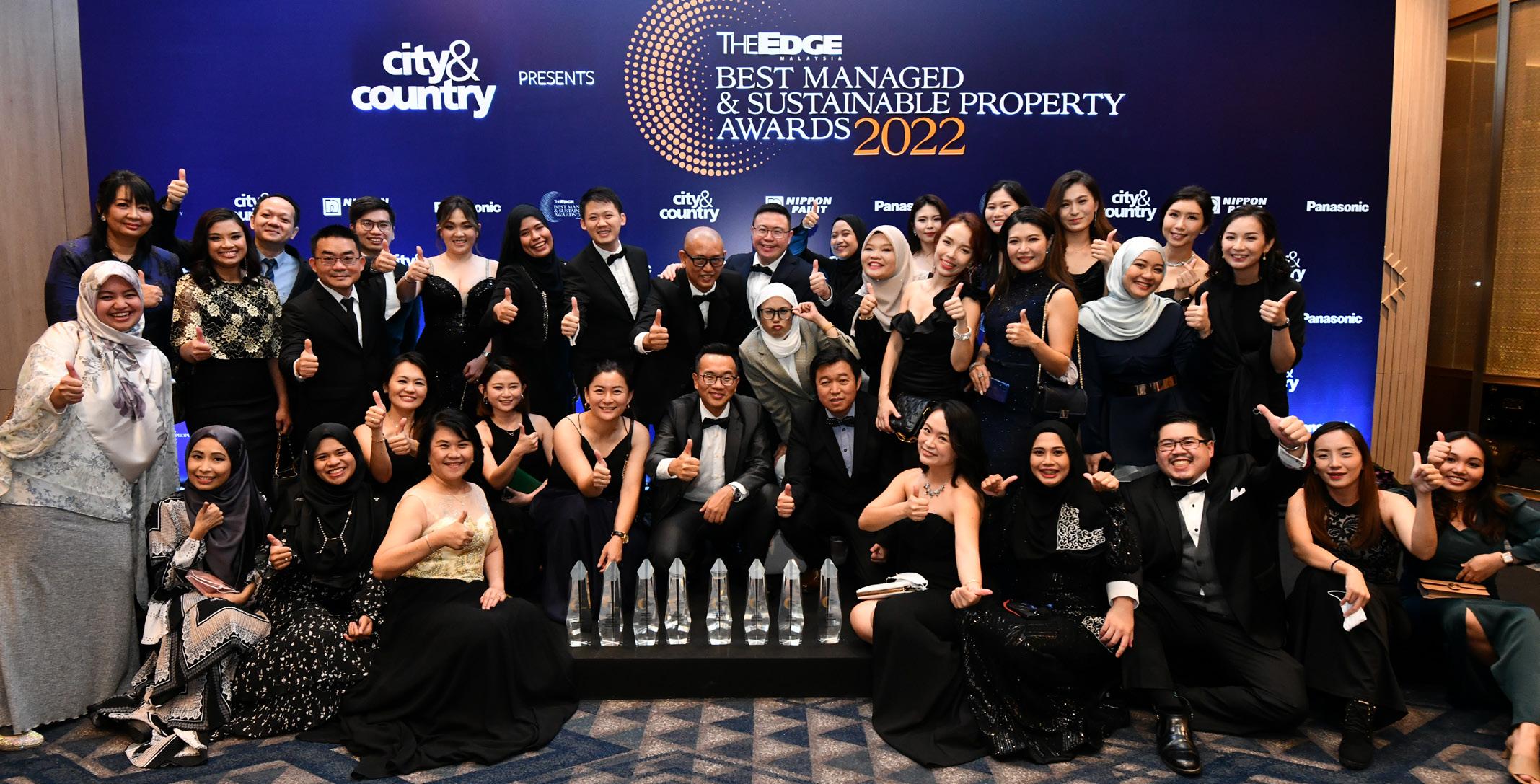
“We’d like to thank our valuable clients who have always been so supportive and given us constructive feedback; our team from the top management, senior management to the ground staff who are all committed to execute (the tasks at hand and the new ideas), and also the organiser The Edge Media Group and the panel of judges for taking the awards seriously, devoting their time and enlightened us about how we can improve.”
Not unlike the past years, teamwork was again a key ingredient and thanks to the frequent communication taking place across all levels, the camaraderie spirit has apparently become stronger this year.
“This fosters a closer bond between each other and we do not shy away from sharing even bad news so we can
> Guoco Tower - Below 10 Years Single-Owned Office (Mixed Strata)
> Menara Bangkok Bank - Below 10 Years Multi-Owned Strata Office
> Star Residences - Below 10 Years
Multi-Owned Strata Residential
> Solaris Mont’ Kiara - 10 Years & Above Mixed Development (entire)
> KIPMall Masai - 10 Years & Above
Specialised Category
> Hijauan Kiara - 10 Years & Above Multiple-Owned Strata Residential
tackle it together and not burden a single individual all on their own.”
He admitted to the inevitable genuine mistakes every now and then but from there it birthed avenues to learn from, “If a company only reports good news, how can it progress?”
Sharing from the Awards standpoint where team cohesion was even more
evident, HBMK Associate Director Paris Tian said, “For the site team to feel the importance of this award, it comes from the involvement of the top management because even the boss himself will go down to the site for the rehearsals. So it’s not just all talk alone, this is how we learn and grow together.”
“I still remember one of those years when it was already quite late at night, ‘boss’ would still call for a meeting via zoom to rehearse,” shared Senior Area Manager Katherine Yong of the label they commonly address HBMK’s chief Hon Keong.
“To have a clear direction is very important,” Senior Building Manager Cyanne Lim chipped in, “to be guided and to know where to go.”
“And I remember too that when the judges were going to visit our first site at Sime Darby Motors City, available team members from the HQ and other sites made their way there to assist,” continued Paris. “This is how serious we are as a team about the awards.”

With a staff count exceeding 700-strong now, the formidable team also has their work fully cut out with each project commanding a slightly different approach by the different set of client profiles. But despite the differences, at the base of it all are the well-defined SOPs and flowcharts that democratise the HBMK team to communicate clearly.
“Just to touch on the point of SOP, the most important thing is the enforcement and consistency from one year to the next,” said Katherine. “The audit done by the Awards helps identify the gaps for us and where we can enhance from.
“For example, in one of the years it was on IAQ (internal air quality) and another year it was ESG (environmental, social, governance), So we’re learning different things from the judges every year.”
The familiarity cultivated over time provides a strong foundation for the team to rise to the occasion, especially in times of emergencies like the Covid-19 pandemic, which had inadvertently pushed the team to dig deeper when it mattered most.
“One of the positive feedbacks we received was that we maintained regular communication with the owners about the SOPs, enforcements etc,” recalled Katherine of the lockdown announcements and the panic-stricken state. “Our boss even created the ‘Covidbuster’ to mobilise sanitisation from the HQ as soon as an infected case was reported.”
The mastermind behind the catchy name, borrowed from 1984’s Hollywood blockbuster “Ghostbusters”, then opened up about how Covid-buster came about, “When the market was
flooded with sanitising services, we sourced for some quotations from the vendors but their prices were too steep.
“We then looked internally and realised that it wouldn’t have been so expensive to acquire the disinfectants. We then strategised to mobilise our own specially designated team, our own vehicles and machinery to do it.
“From then on, we informed our clients that we will sanitise the complexes as soon as any infectious report is made, 24x7 and without any extra cost to them.”
“Most of our clients really appreciate us for this,” shared Cyanne.
“One of the owners at Hijauan Kiara also complimented us for our service,” commented HBMK Associate Director Jessie Koh with Katherine chiming in, “I remember one of the cases was reported at 10pm and another on Sunday, and we were able to deploy our team within a few hours.”
“This is purely our customer service and to give back to our clients,” said Hon Keong. “Even the Technician who was part of the team also felt proud about this.”
HBMK’s social consciousness in this regard resonates with the famous saying of legendary author, poet and activist Maya Angelou, “People will forget what you said, people will forget what you did, but people will never forget how you made them feel.” Perhaps this is how HBMK garnered the clients’ strong and continuous support all year round.
Winning the Awards has had a contagious effect on HBMK’s site teams, “They are willing to undergo the strict evaluation and welcome the judging panel with open arms so they know what else they can improve on,” disclosed Hon Keong. “Valuable feedback is also channelled to the rest of the HBMK staff so they are aware of it.”
“The good thing is that our teams are also open to receiving such feedback,” Cyanne added.

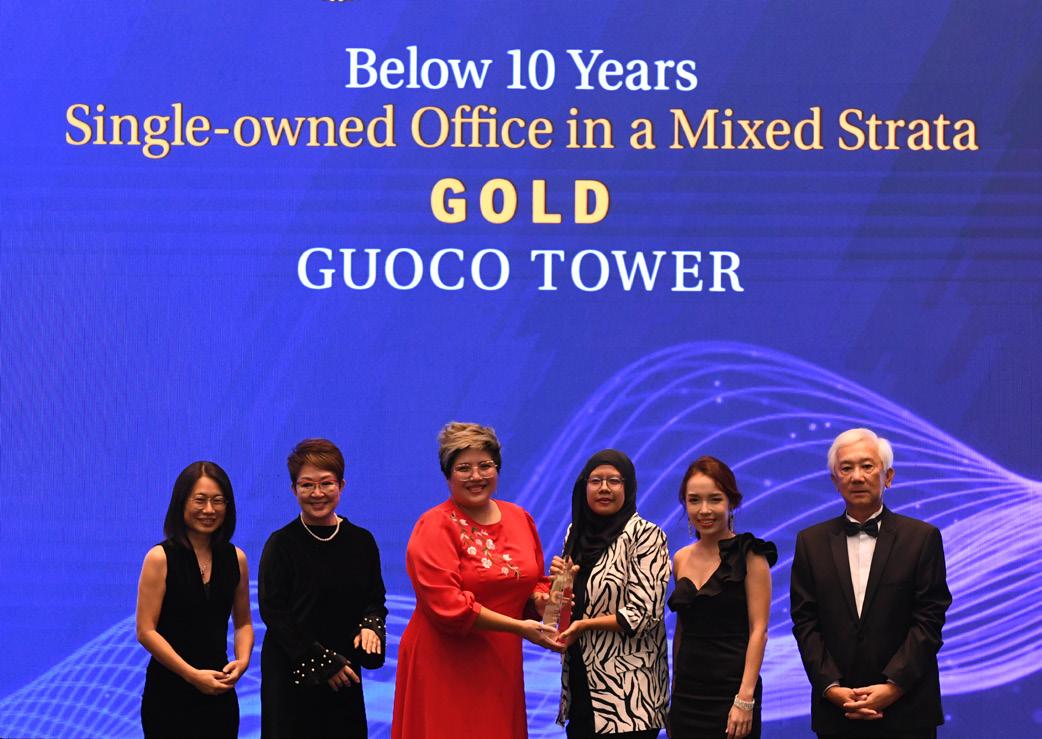
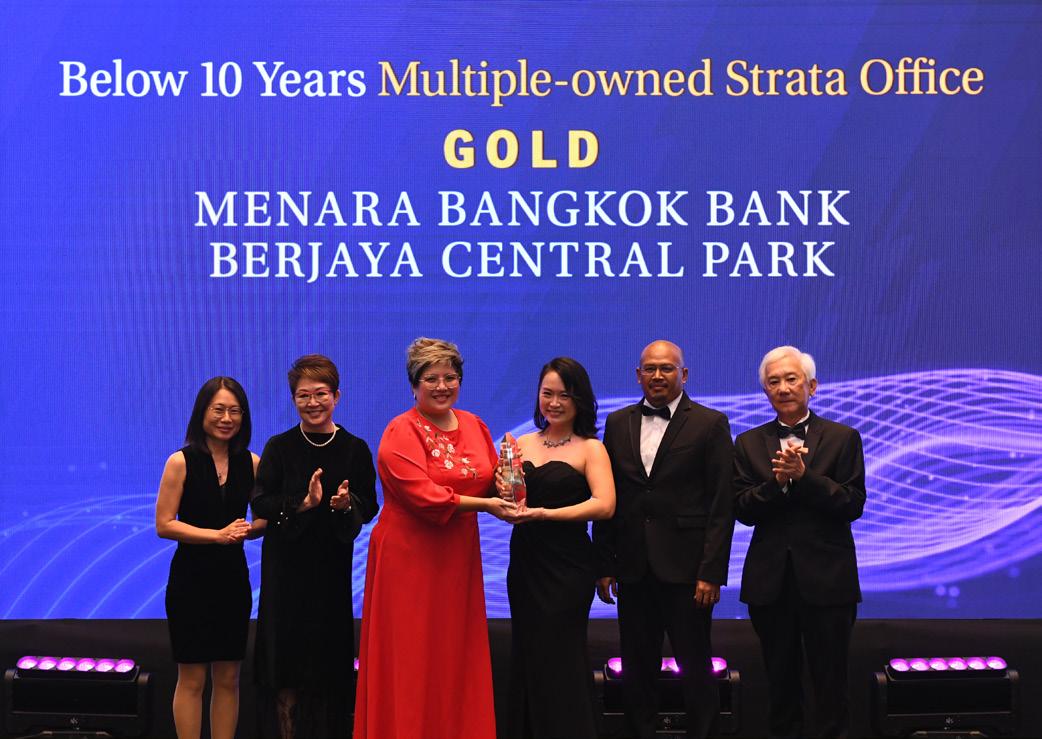


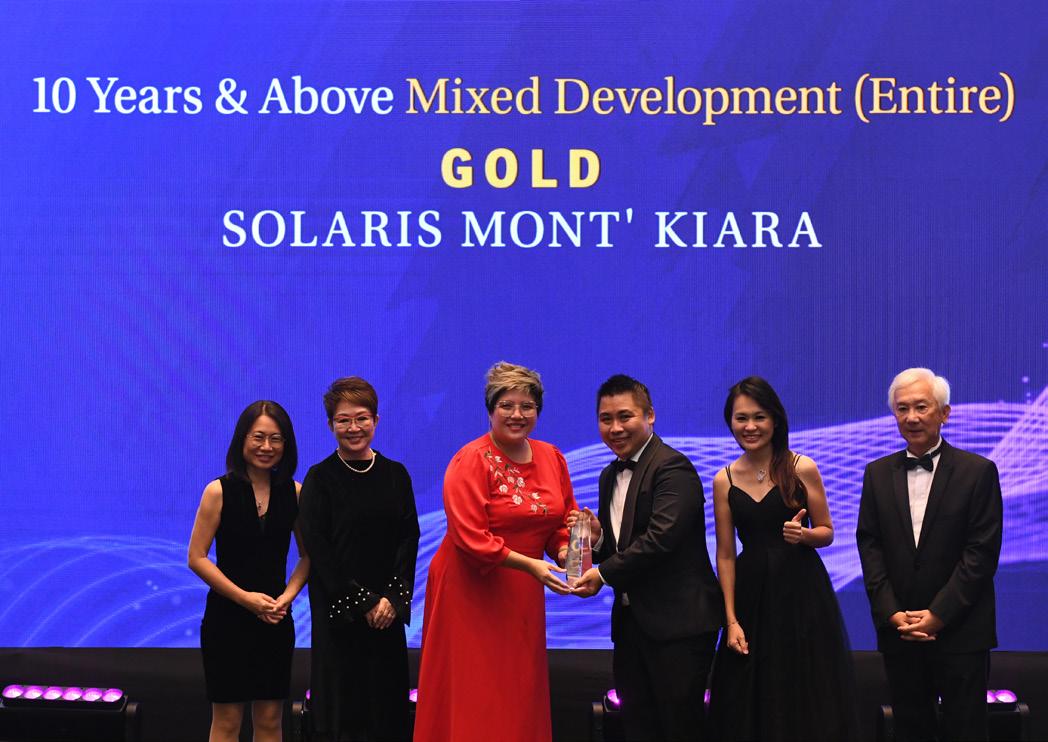
“The value of the cars demands a higher service level from us and that’s where systems such as the UVSS comes into play,” emphasised Hon Keong of the premium brands at the auto complex which includes Porsche, Jaguar and BMW. The attention to detail hence becomes the yardstick of how meticulous facility management can go.
The one-stop centre of the Sime Darby Motors City (SDMC) is equipped with the AutoNumber Plate Recognition (ANPR) system and the Under Vehicle Surveillance System (UVSS), both working in tandem to safeguard the prized vehicles from untoward incidences of terrorism, crime, theft, scams and vandalism.
“We work closely with the client to study the systems and after installation, it makes it convenient for our team to identify where a client’s car is located,” said Cyanne.
“Yes, on making the system functional, that’s where we come in,” added Katherine. “Aside from the cleaners and landscaping personnel, we also provide a tea lady for Porshe’s and a barista for Jaguar’s showrooms.”
“And we have to tailor our services to each carmaker’s requirements too. So the soft skills here are very important which is way beyond our usual job scope,” affirmed Hon Keong.
Both Katherine and Cyanne are the designated leaders here alongside a 20-man team and together, they can fully attest to the client’s “Wow Factor” request in making SDMC spotless after serving the client for about 3 years.
“As such, managing the client relationship is very important,” concluded Cyanne.
Managing 3 Kia Peng is about getting up close and personal with the who’s who in the luxury residences.
“During the Awards inspection, one of our proud residents also invited the panel of judges into their home for a tour. That’s how supportive they are with us and the awards,” Paris shared.
The tall order to maintain an elite address within the KLCC vicinity for the dignitaries, VVIPS and the Ultra High Net Worths is certainly no child’s play, what more when the residential tower is already more than two decades old.
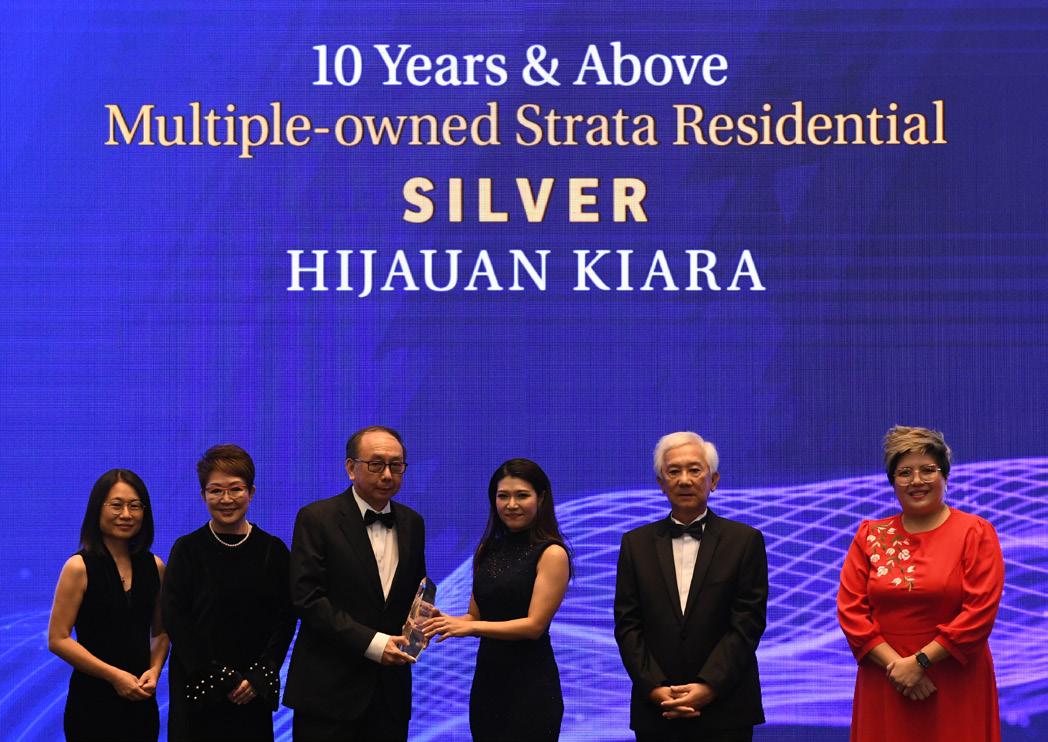
“We have to say this, the built quality, furnishings and fit outs by the developer are all top of the range,” beamed Hon Keong.
“There is no problem with the day-to-day upkeep but the focus is on the projects we have to embark on like the lift modernisation and facade repairs,” said Paris after managing the property for about 2 years, “but thankfully our committee is very supportive because they can see the building is getting old.”
From the outside, Menara Bangkok Bank exudes a classy tint like a towering icon of first tier cities but little did everyone know it demands a cleaning schedule spanning 365 days a year.
“Yes, the only way to do so is to have it cleaned daily,” mentioned Hon Keong.
As a gold award returnee from 2017, pressure was also mounting for HBMK this year, “The question on everyone’s mind was ‘What if we couldn’t get the Gold again?’, “How are we to answer to our client?’, ‘Where did we fall short?’”

Fortunately there was no need to address any of these questions because the trophy was brought home, deservingly so too since there have been many upgrades done like the indoor air quality control, elevator system, safety & security systems and more. Hon Keong credited the constant upgrades to the management’s own initiative and their close communication with the owners and tenants.
“We must also remember that there is a bank in this building and so the safety and security aspects are top priority. For example, if the response time used to be 10 minutes, it is now almost instant. This is to make sure people feel comfortable,” explained Hon Keong.
To date, HBMK has been with Menara Bangkok Bank for about 7 years and one of its latest achievements is zero lift breakdown in the last 7 months.
Sited on another luxury address in the country, Guoco Tower in Bukit Damansara, challenges HBMK with the sustainability factors that contribute to the project’s GBI (Green Building Index) green certification.
“Our job is to help the client maintain Guoco Tower’s GBI rating because of the certification’s annual audit,” said Paris, adding that the job to maintain was made easier because all the green features were already installed by the developer and they are in good working condition.
Guoco Tower enjoys the superior built quality like the 3 Kia Peng Apartments as they are both constructed by the same developer and as such extends a certain level of confidence and premium to the kind of tenants it can attract.
“With the higher profile tenants, comes the higher level of expectations,” Katherine asserted, deriving the sentiments from the 2 years working relationship with the client. “It is therefore a daily affair for us to continue to level up our performance day-in day-out.”
The star studded affair began at ground zero, literally meaning HBMK was roped in to consult about property management such as the service charges even before the building was completed.
“Yes, we went in about two years before completion and so up until now, we’ve been together for about 5 years,” said Hon Keong.
The developer of Star Residences has a keen eye for details, “He pays attention to every single item and so the quality of the furnishings are very good,” shared Paris who also singled out the pricey wash basins in the common toilets as an example, “Every common toilet has a different design too.”
With every room and space uniquely designed and fitted out with the exquisite taste of the developer, how does it then influence HBMK’s day-to-day management?
“The difference is only in terms of interior design but then the foundation is still the same,” shared Paris. “So for us, the core of what we do does not change much as we still have to look into the standards like the pump rooms, elevators etc.”
This Gold kicked off the night for HBMK and up from Silver in 2017, success was definitely sweeter this time round. The Award is a reflection of the progressive Management Committee (MC) said Cyanne, “They are very open and would always think of what to do or what to upgrade. They also compare it with overseas examples and ask “Why not do it here’?”
But before striking gold, Paris shared that one of the major problems plaguing Solaris Mont’ Kiara (SMK) was the foul experience left by the public, “They tend to use the toilets in our building because it was free but cleanliness became tough although we had cleaners onsite.”
Adamant about “doing away with that image”, Hon Keong’s team proposed a revolutionary cashless RM1 per entry system to the MC and to their surprise, got the blessings to go ahead.
“Once implemented, the atmosphere changed totally. The toilets were clean and the ROI also saw a return within 3 years instead of 6 to 7 years,” he said referring to the capital expenditure invested in the cashless system. He was however initially concerned if all owners and tenants would be convinced since it may inconvenience the F&B patrons, “But in the end, nobody complained.”
“It was a very daring decision I’d say,” said Cyanne, the “iron lady” overseeing SMK, “But they love the current condition now because it is cleaner.”
With 6 years already under HBMK’s belt, SMK had also gone through a torch-on membrane waterproofing remedial work covering about 90,000 sq ft on the rooftop in 2020.
The oddity of this Silver says a lot about the awards and HBMK because unlike the rest of the glitzy winners, one of KIPMall’s anchor tenants is a wet market.
“It is in fact the heart of the mall and the biggest income generator in KIPMall Masai,” said Jessie. “The mall is often promoted as a one-stop centre and you can find everything here from fresh produce like durians to daily necessities.”
“Fish sold in the market are also fresh from the ports everyday,” added Katherine.
According to Jessie, “KIPMall Masai is one of seven KIP REITs properties we’re managing. It is one of the early pioneers and the most outstanding one.”
“We have seen how it has grown over the years and our client KIP REITs is very supportive,” said Jessie of the little over a year’s relationship since. “The tenants here are very different too because they provide feedback and are willing to listen to our views. That way, we’re able to upgrade from time to time.
“For example, since moving to this bigger premises, there’s been upgrades like the airconditioning and this has made it one of the cleanest wet markets around.”
Another plus point is the client’s appreciation for A&P including organising events to attract the crowd, with an allocated budget to boot, “We consult the client and give our feedback from the financial perspective since it is a REITs and we also advise if the ideas are practical in terms of maintenance. The good thing is that the client is often receptive to our suggestions.”
A development with waterfalls among its most alluring features, Hijauan Kiara has undergone a period of restoration under HBMK’s management. The intricacy of the job also includes the full grown plants on the higher podiums.
“While it may be easier to manage trees on the ground, we had to engage professionals like an arborist and an engineer to determine if the podiums can withstand the overall weight of the plants,” shared Jessie.
“When we took over 3 years ago, there was a fair bit of rectification and reinstatement work to do such as the fire fighting system, the chargeman and restoring the chlorinated salt water pool back to its original state, among others.
“For some reason or perhaps due to the misconception that a salt water pool is more difficult to maintain, it was converted into a normal chlorinated pool but that is technically more harmful to the skin.”
“In fact it is becoming a trend these days to convert into chlorinated salt water pools,” said Hon Keong.
“The committee here is also very strict compared to some other developments and this is good because they tend to follow the SOPs closely,” Jessie complimented the client in return.
For a company that has come this far, it is certainly surprising to discover that almost no mass marketing campaigns have been done to blow their own horn. Instead, new clients have been onboarded just by word of mouth.
“Because the main challenge after securing a client is this, how do we sustain them? So the moment we secure a new project, we commit full resources to it,” said Hon Keong.
Citing an example from the days of the pandemic, he said, “Due to the lockdown, most people were at home, registering almost 100% occupancy in some buildings. That’s where the real test of the property managers happened.
“It woke up the residents, the JMB, JMC and the developers on the importance of the property managers because of things like the lifts, water supply, WiFi etc. All these cannot happen smoothly overnight, they have to be maintained regularly so that during the test, they can function without a glitch.
“Covid-19 has also made the load heavier for property managers especially when one of our team members is tested positive. As such, it is important to have sufficient manpower to support and sustain the projects we’re committed to.”
He further explained that the weight of being a property manager does not rest on how much the clients fancy the HBMK team because that is the easy part, “What we want is respect from each individual owner to the committee and property manager. The moment the respect is there, we can introduce better structure and more regulated policies according to the law for the benefit of everyone. This is very important.”
Moving forward, the company aims to continue maintaining the impeccable standards and the important brand quality the company has built thus far. By that token, HBMK is anticipating to release a mobile app by the end of 2022 that has been fully commissioned and customised by the expert hands of the property and facilities management company itself. Among the many under-wrapped features of HB2U is that it will circumvent delays of repairs and rectifications by automating certain workflows.
At the point of writing, the company is already in the testing & commissioning phase of the app and it shouldn’t surprise anyone if by the time it is released, HB2U will quickly rank as one of the most downloadable on Apple App Store and Google Play, or at least among the stratified owners, residents and tenants in properties managed by HBMK.
Henry Butcher Malaysia Property Management (Sel) Sdn Bhd also received a Special Mention for MOB Specialist Clinics, Gleneagles Kuala Lumpur in the 10 Years & Above Specialised Category.
MOB is the only stratified, multi-owned, purpose-built medical suites in Malaysia and it has been managed by HB (Sel) for 11 years. It complies with the Strata Management Act and medical suites guidelines by the Ministry of Health.
After almost 3 years of the Covid-19 pandemic, Malaysia’s retail industry is finally on the path to full recovery.
By Tan Hai Hsin, Henry Butcher RetailUnlike the vanity businesses, the grocery sub-sector enjoyed very good sales right from the first lockdown in March 2020 compared to other retailers. Sales have been brisk these 2 years because many consumers began cooking more regularly at home and even started selling foods from home. This led to frequent visits to the grocers to get their supplies. Sales have nonetheless come back to 2019 levels off late with the majority of the consumers back to their usual lifestyles.
Our projection at Retail Group Malaysia for 4Q 2022 is 1.0%, which may seem low but it comes on the back of the high growth rate achieved a year ago at 26.5%. For the full year of 2022, we are projecting a growth rate of 31.7% and this will be the highest annual growth rate achieved in the history of Malaysia’s retail industry.
T for the ensuing third quarter is expected to bring forward a full recovery, thus by the end of 2022, Malaysia’s retail industry shall regain its footing back to 2019’s sales level.
he strong growth witnessed during the first 6 months of this year and the high expectations
to fully celebrate the “freedom” as well.
On the back of the positive development, Retail Group Malaysia has revised the 3Q 2022 estimate upwards to 50.0%. This higher-thanexpected growth rate is due to the large contractions experienced in 3Q 2020 (-9.7%) and 3Q 2021 (-27.8%).
Performance in 2Q 2022 saw the Malaysian retail industry jump by 62.5% compared to the same period a year ago. This was mainly contributed by the Hari Raya period where almost all Covid-19 related SOPs were relaxed or removed after 2 years of lockdowns.
Upon lifting of the restrictions, all retail stores were permitted to open and all economic sectors were allowed to resume business. Malaysians of all walks of life including the non-Muslims took this opportunity
The unprecedented high growth rates in 2022 are considered an isolated occurrence and should never happen again unless shops are forced to close in the future for an extended period of time.
Throughout the 3 major lockdowns experienced in the last 2 years, a few sub-sectors have suffered severely, namely fashion & fashion accessories, and the personal care (skincare & cosmetics products) retailers. But now that consumers are back visiting the physical stores, they have begun enjoying strong double-digit recovery.
We have been observing the shopping traffic in malls after the Hari Raya festival and major malls in Malaysia continue to be crowded especially on the weekends. A common sight is also Malaysian consumers buying non-essential goods and dining in better quality cafes and restaurants, with events and activities organised by the mall managers well received.
Although shopping traffic may have been back to 2019 levels but shopping centres’ occupancy rates and rental rates have not. In particular, new shopping centres opened during the last few years will continue to struggle securing new tenants and achieving high occupancy rates. As such, a full recovery of the occupancy and rental rates will only take place in 2023.
A majority of the shopping centres in Malaysia have survived the Covid-19 era but new challenges persist to test the survival of the landlords and tenants.
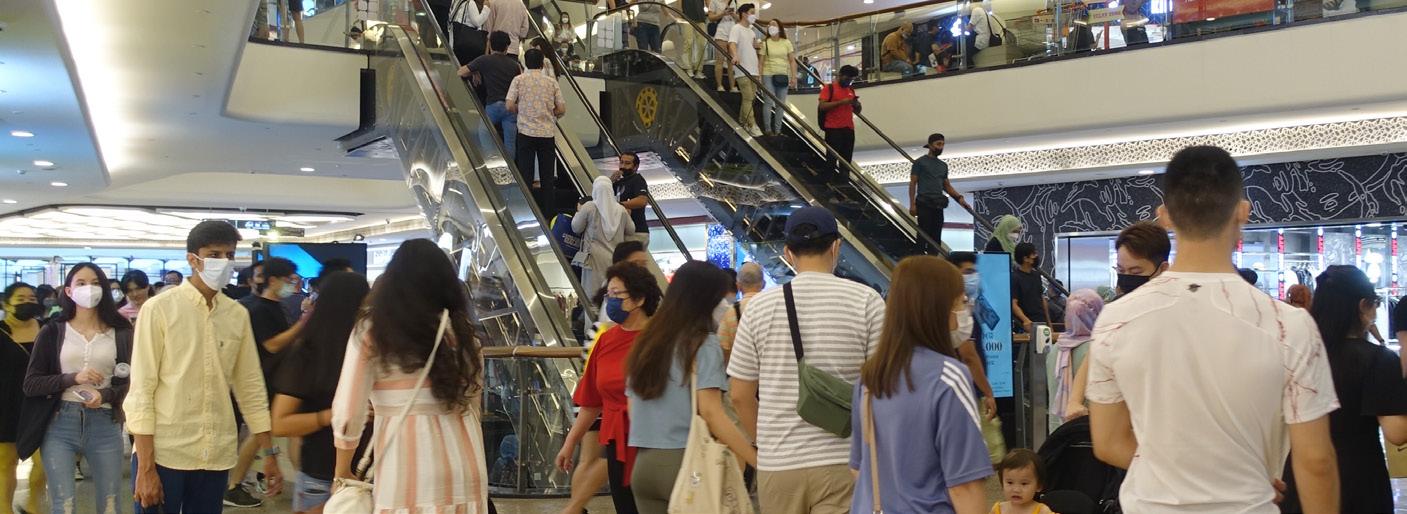
Prices of basic necessities and many consumer goods have continued rising in the country in 2022. The higher retail prices have inevitably led to a higher cost of living for
Malaysian consumers. This translates to less disposable income for nonessential goods & services and such a price shock will continue to erode the purchasing power of Malaysian consumers in 2023.
In recent months, Bank Negara Malaysia raised the overnight policy rate (OPR) by 25 basis points to 2.0% on 11 May 2022, the first hike since July 2020, followed by another 25 basis points to 2.25% on 6 July 2022. Then just two months later on 8 September 2022, the central bank raised the rate by another 25 basis point again to 2.5%.
The higher interest rate has compelled Malaysian homeowners to pay higher monthly instalments. With the exception of car repayments, the risen rate has one way or another delayed Malaysians’ purchases of high-valued consumers’ goods although it has also encouraged Malaysians to put more money in the banks.
Another interest rate hike is nevertheless on the cards and is expected to take place in the near future, which will further shrink Malaysians’ purchasing power.
Beginning from 1 May 2022, the minimum wage for an employee increased from RM1,200 to RM1,500 per month across the country for companies employing 5 or more staff. This has increased the cost of operations not just for the retailers but also operators involved in the entire retail supply chain. As a result, prices of consumer goods have increased throughout the country including those in the small towns and rural areas.
The never ending Russia-Ukraine war that has disrupted the global supply chain has also caused higher energy
prices, shortage of raw materials and industrial parts in Malaysia and around the world.
While some retail outlets in Malaysia are facing a shortage of merchandise to sell, many have to deal with a higher cost of retail goods which then led to higher retail prices. The weaker Ringgit in the last few months has not helped the situation either, inducing higher import costs on raw materials and semi-finished goods (to make end-consumers’ products in Malaysia) as well as higher prices of imported finished goods. Overall, retail prices of many goods in Malaysia have since cost even more to acquire.
For many retail outlets, the lack of staff has affected their sales and operation hours and this shortage is prevalent across the board from the Malaysian workforce to the foreign workers, impacting the entire retail supply chain.

The issue of shortage is more acute in Johor due to the strong Singapore currency. This has given employers in Singapore the financial means to offer very attractive salaries to Malaysians as a countermeasure to the same shortage problem faced in the Republic.
Back in Malaysia, we have seen many Job Vacancy or Hiring signages hanging at the shopfronts of shopping centres. Many of these also stated the salaries and benefits clearly, perhaps to quicken the hiring process.
In shopping centres these days, it is also common to see shops closed momentarily for short breaks (eg. lunch, toilet etc) with the doors locked or roller shutters down. Shopping centre managers are currently allowing this because of the severe labour shortage in comparison to the better times previously.
In early September this year, the Ministry of Tourism, Arts and Culture (MOTAC) revised its target for foreign tourist arrival to 10 million but this is still a far cry from the arrivals in 2019 of 26.1 million. The lack of foreign tourists is affecting retail businesses in shopping centres highly dependent on foreign tourists such as the Central Market in Kuala Lumpur and the international airports, especially KLIA and klia2.
The situation is however a little different down south in Johor and fortunately its retail market is recovering well due to the arrivals of shoppers from Singapore.
Prior to the Coronavirus, shopping centres in major cities and towns (including Kuala Lumpur, Selangor, Johor Bahru, Nilai, Melaka, Kota Kinabalu etc) were facing weak occupancy rates due to oversupply and competition from the hybrid retail centres. The challenge of oversupply is expected to continue affecting this market segment next year.
In Kuala Lumpur and Selangor, 12 new shopping centres have contributed 5.5 million sq ft of new retail supply in 2022. Another 4 shopping centres are expected to be completed in 2023, contributing a total supply of 2.4 million sq ft.
At the point of writing, the United States is already in a technical recession while countries in Europe are facing an energy crisis. China on the other hand has been slow in its recovery due to its strict Covid-19 policy. All these will slow down Malaysia’s economic growth by the fourth quarter of this year and the first half of next year.
Economic slowdown in these major economies will undoubtedly affect Malaysia’s export growth and in turn impact take-home pays as well as consumers’ spending in the country.
Fewer new launches but more units in the first 9 months of 2022 compared to the same period in 2021.
1) Ampang = 2 Projects
Highrise = RM800 - RM1,000psf
2) Bangsar = 2 Projects
Highrise = RM1,000 - RM1,800psf
3) Bukit Bintang = 1 Project
Highrise = RM900 - RM1,300psf
4) Segambut = 1 Project
Highrise = RM700 - RM800psf
5) Setapak = 2 Projects
Highrise = RM400 - RM500psf
• In the first 9 months of 2022, Klang Valley saw fewer new launches with 32 projects compared to 2021 with 42 projects. However, in terms of the number of units, 2022 had slightly more with 15,231 units compared to 15,045 units in 2021.
• Composition of the new launches in the period under observation in 2022 were divided into 75% in Selangor and 25% in Kuala Lumpur, marginally different from 2021 when Selangor had 71% against Kuala Lumpur’s 29%. The same however cannot be said in terms of the number of units as Selangor contributed 68% against Kuala Lumpur’s 32%. In 2021, the trend was reversed with Kuala Lumpur (69%) edging Selangor (31%).
• Tracking the new launches on a monthly basis, July 2022 contributed
the highest number with 8 projects followed by September with 6 projects, somewhat bucking the trend of the mortgage moratorium cessation and the rising inflationary pressure from Q2 2022 onwards. In contrast to 2021, which was still reeling from the consequences of the Covid-19 pandemic then, the higher
number of launches were in March (10 projects), April (9) and May (7).
• Terrace homes and the superlink houses led the new launches with 12 projects in the first 9 months of 2022, mimicking 2021’s performance with 18 projects. Serviced residences/ apartments is next in line, which looked to be making a comeback, with 9 projects launched so far this year. In 2021, semi-detached homes occupied the second spot with 8 projects launched.
• Between the high-rises and landed homes, 2022 has seen the high-rises making a rebound with 20 projects compared to 14 landed homes. In 2021, landed projects (32 projects) doubled that of the high-rises (16 projects).
• By the number of units, the margins of difference between the two periods remains the same with high-rises contributing 82% against landed’s 18%.
• In terms of built-up sizes, the 801 to 1,000 sq ft category were the most common in 2022 with 13 projects having such units compared to 2021 when the larger units exceeding 2,000 sq ft were featured in 29 projects. Perhaps reflecting a more realistic market sentiment in 2022, the typical built-ups of between 600 to 1,500 sq ft range had a considerable number of projects with such units.
Batang Kali = 1 Project
Landed = RM150 - RM300psf
Cheras = 1 Project
Highrise = RM600 - RM650psf
Cyberjaya = 1 Project
Landed = RM350 - RM450psf
Dengkil = 3 Projects
Landed = RM300 - RM400psf
Highrise = RM400 - RM500psf
Kajang = 1 Project
Highrise = RM600 - RM800psf
Klang = 1 Project
Highrise = RM400psf
Petaling Jaya = 1 Project
Highrise = RM400 - RM500psf
Puchong = 2 Projects
Landed = RM550 - RM800psf
Highrise = RM450 - RM500psf
Puncak Alam = 1 Project
Highrise = RM450 - RM500psf
Rawang= 2 Projects
Landed = RM350 - RM450psf
Semenyih = 1 Project
Landed = RM500 - RM650psf
Sepang = 2 Projects
Landed = RM250 - RM400psf
Shah Alam = 2 Projects
Landed = RM600 - RM650psf
Highrise = RM250psf
Subang Jaya = 2 Projects
Highrise = RM600 - RM800psf
Sungai Buloh = 2 Projects
Landed = RM400 - RM750psf
16) Taman Melawati = 1 Project
Highrise = RM500 - RM600psf
• There is a relatively even split among all price ranges in 2022 with the RM401,000 to RM600,000 category leading slightly with 15 projects carrying such price tags. In 2021, there were 33 projects with units priced above RM1 million.
- 1,200sf
- 1,500sf
- 1,800sf
- 2,000sf
• When measured on a price per sq ft basis, the data showed an inclination towards the affordable range with the below RM500 per sq ft spotted in 19 projects and the higher prices trailing far behind. In 2021, 44 projects featured products below RM750 per sq ft, quite likely motivated by the support from the extended version of the Home Ownership Campaign.
• Dengkil in Selangor led 2022 with 3 projects as the highest number of launches by locality compared to 2021 when Setia Alam led the market with 4 projects launched.
RM600,000
RM800,000
-
-
-
-
an oil spill, or to try to assign monetary value to ESG factors for which there is no market, such as the governance factors. Still, this way of integration provides a much better starting point for discussion because the assumptions used are clearer than those made in the discount rate adjustment. It would also help in the subject company management’s attention and thought process from a shareholder value perspective – adding or reducing due to the ESG factors.
Often, trying to translate ESG factors into future cash flows with a high degree of conviction, due to a multitude of consideration factors with no ready benchmarks, is challenging. As such, valuers need to look at the sensitivities of the ESG factors to the overall valuation and consider different scenarios. These steps will help the investors, or the user of the valuation, gain better insights into the materiality and potential impact of ESG factors on the overall valuation.
n the first part of this article, we looked at how interest in the ESG (Environmental, Social and Governance) market has come
I to be especially among the investing fraternity. We also looked at the factors within each of the ESG categories that may influence the company and the rationale as to why they can sometimes be interlinked and in fact not as straightforward to make a valuation. We then talked about the valuation methods one can deploy to measure a company’s worth ie. the Market Approach and Income Approach. In this concluding part, we shall be looking at the specific considerations under the latter method, the Income Approach, to arrive at a fair valuation for a company.
The considerations under the Income Approach include:
• Beta – A reliable output from the Capital Asset Pricing Model (CAPM) requires the identification of sufficiently comparable public companies. As with the market approach, ESG characteristics may need to be added to the current framework for comparable company screening and identification.
• Long-term Growth – A core concept of ESG investing is to acknowledge that not all companies have the same structures in place to drive long-term sustainable growth. As such, a blanket reliance on standard long-term growth rates, with only minor consideration of industry and/ or geographic growth rates, is likely to be insufficient. In fact, evidence suggests that ESG criteria is strongly correlated to longterm survivorship likelihoods, with a positive impact on the long-term growth rate. Given the low interest rate environment in the current Covid-19 pandemic, valuations have
become extremely sensitive to the longterm growth rate assumption. In addition, for low-performing ESG companies, many may argue that a long-term rate of decline, rather than growth, may be more appropriate.
• Company specific risk (or the Epsilon/ Alpha) – Adjustments for additional risk in the cash flow projections requires detailed consideration. Understanding the ESG profile of the subject company, comparison to the comparable public companies used to derive other inputs to the analysis (ie. Beta), and interplay with projected cash flows, are all potential areas for consideration.
These considerations are highly technical and involve complex issues to be addressed and as such require additional deliberation for any ESG framework.
Another way of integrating the ESG factors in the income approach is by adjusting the future cash flows of a company. Take the BP oil spill in the Gulf of Mexico in 2010 as an example, not only did the spill result in fines for the companies involved but it also led to disruption of production and operations, and stricter (hence more expensive) safety measures in the years thereafter. All of these impacts have an effect on future cash flows that can and should be integrated in the financial forecast/projections.
The key advantage of this method is that it forces the relevant company’s management to translate the company’s ESG factors into future cash flows and thus to focus on the relevant material issues. However, it is understandably difficult to estimate cash flow impact on low-probability, high-impact events, such as
For example, for companies that have a more binary ESG risk (in other words, fewer options), one could look at a “business as usual” scenario and a scenario in which the ESG issues materialise. Both scenarios could be probability weighted to come to the valuation for the subject company.
ESG factors are gaining traction in business valuation analysis and are expected to represent fundamental and necessary considerations in the years to come. The first step is to begin with incorporating ESG considerations into valuation practice which are critical for the relevance, and therefore the sustainability, of the business valuation profession.
In addition, business owners should also pay attention to the ESG factors they may have encountered in the normal course of business.
Business valuation incorporating the ESG factors can go a long way for business owners to understand how to use it for its potential business benefits and potentially growth, as well as for business sale, particularly to larger or listed companies, and compliance with financial reporting standards in the future, as this area develops.
This article is authored by Nai Siu Loon, the CoFounder and Managing Director of Spring Galaxy, an Associate firm of Henry Butcher Malaysia. Siu Loon has been providing valuation and related advisory services to the corporate sector in Singapore, Malaysia and the wider AsiaPac region for more than 10 years.
Spring Galaxy is a business valuation and strategic advisory services provider. For more information, please visit: https://springgalaxy.com/
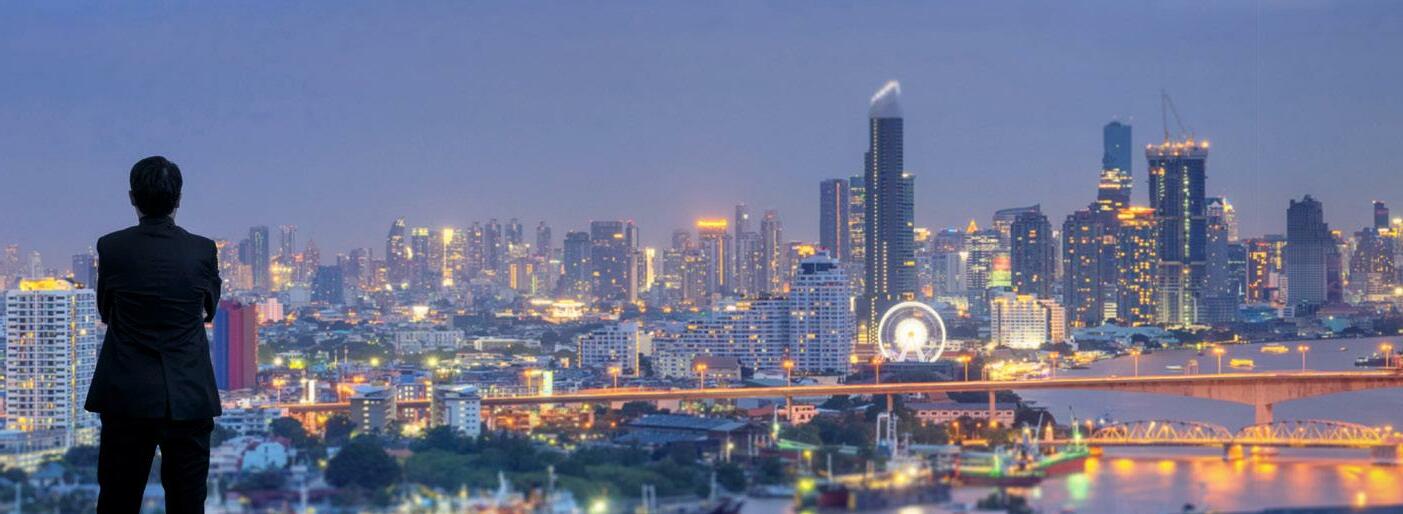
Businesses need to be confident that they are maximising the capital allowances they are entitled to and they need an advisor who can leverage such knowledge to meet their needs.
Specialists of the practice can help interpret and apply statute and precedent case law according to each business’ circumstances.
U related activities and secondhand building purchases can be a relatively complex task. It is therefore important to enhance the claim, from identifying the entitlement to delivering the tax benefits.
ndertaking a thorough capital allowances study on property construction
Establishing what levels of capital allowances are available depends on a number of factors including:
• new build or extension
• fit out
• refurbishment/renovation
• acquisition of a new or second hand property
Capital allowances is essentially the means by which a business writes off its qualifying capital expenditure against its taxable business profits. While claiming capital allowances on vehicles, computers, and furniture and equipment is relatively straightforward, dealing with expenditure on the fit out, refurbishment, extension or construction and acquisition of buildings requires a combination of surveying, property and tax skill sets to maximise the available tax relief.
Our experience indicates that many businesses are under-utilising their claim especially when it involves a big sum of capital expenditures. Most businesses do not have the expertise to identify and document these hidden qualifying expenditures, resulting in capital allowances that are often under-claimed.
The nature of the claimant
• owner or occupier/landlord
• property investor
• tenant
• type of business eg. hotel
The claimant should
• incur the capital expenditure
• on assets used for the business
• owner of assets at the end of the basis period
The following items of expenditure are deemed to qualify for a form of capital allowances.
• Fire alarm and sprinklers system
• Air-conditioning and ventilation system
• Security, access controls and CCTV
• Lifts, hoists and escalators
• Public address system
Often overlooked are proper claims on these plant and machinery items which are embedded in the structure of a building.
At the same time, using the right methodology is proven to maximise claimants’ capital allowances by fully understanding the trade of the claimant, the expenditure incurred and then applying the skill sets of a chartered surveyor with the relevant tax knowledge to present a fully disclosed capital allowances valuation.
Further, a proper analysis should be documented in a comprehensive report that will form the basis of the capital allowances analysis and computations, reconcile the total capitalised costs to the accounting and income tax records, in accordance with the legislation and best practice, to be reviewed by the tax authority.
A fully disclosed analysis will help to provide proper documentation to support the capital allowances claim, thus managing the risk of noncompliance.



